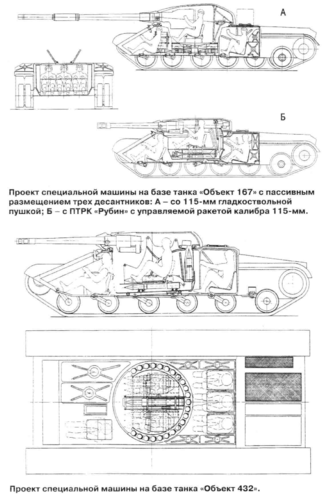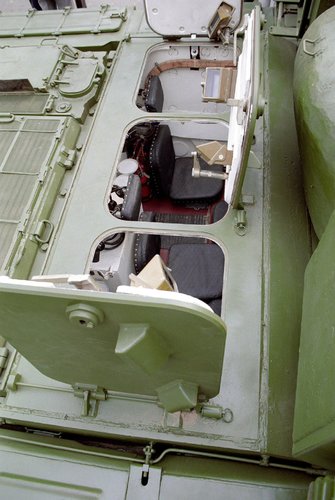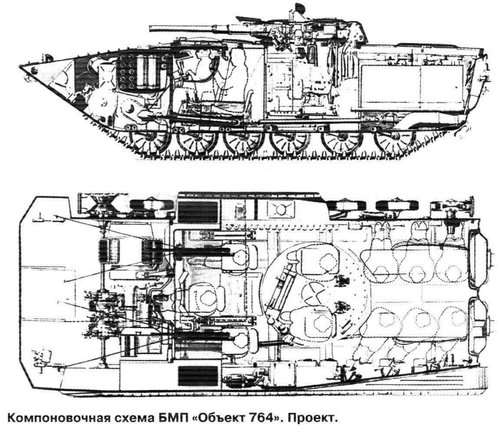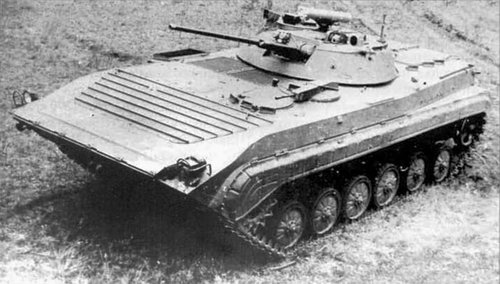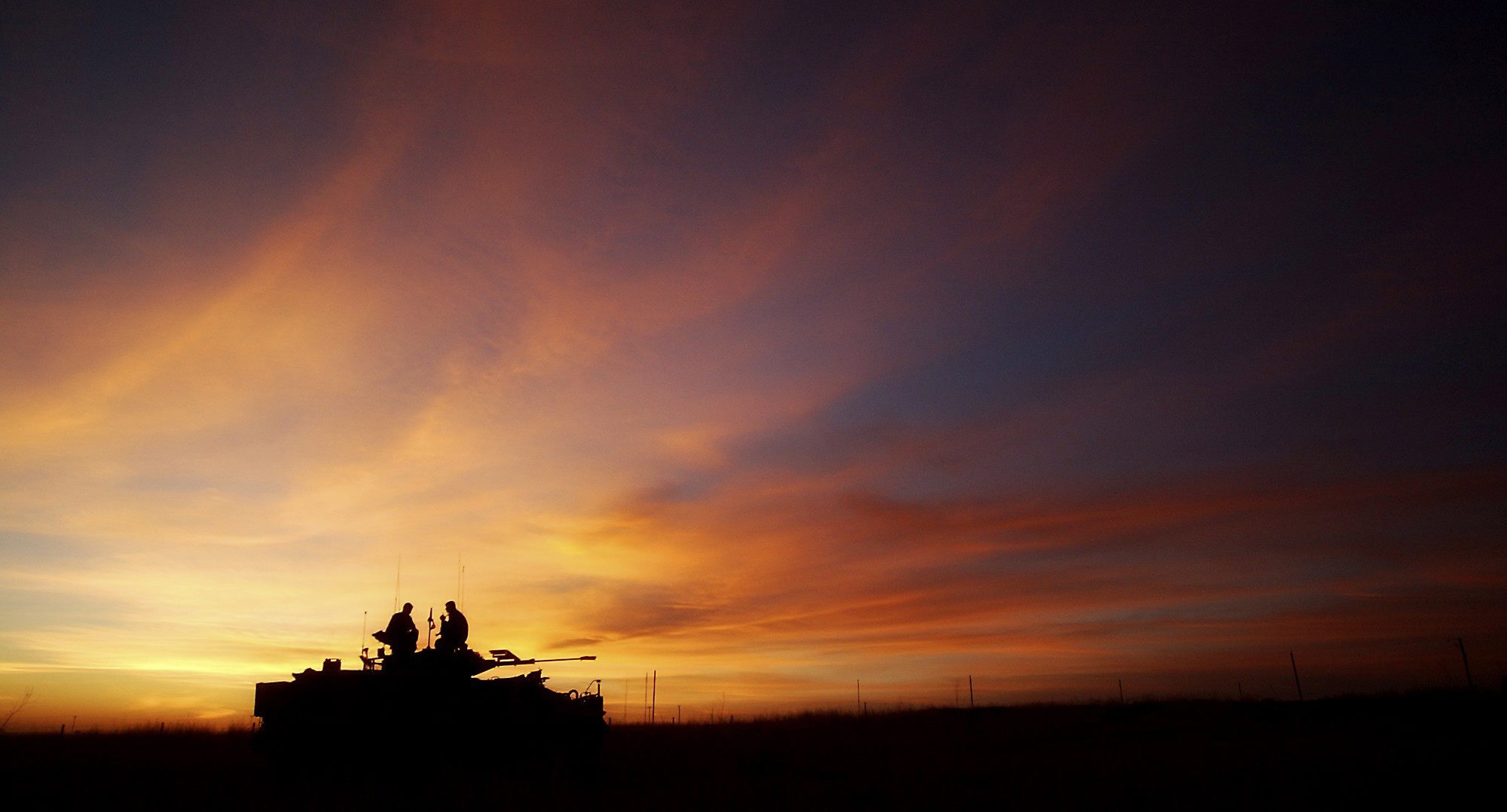I wonder now that we know so much more about the BMP, how radical a it was?
In line with mainstream Western ideas on MICV of the time, with the exception of 73mm gun firing rocket-propelled grenades (thanks to Soviet missile/rocket craze of late 50s - early 60s) which proved to be dead end. Which is natural, since Soviets apparently "borrowed" whole concept of IFV/ICV from Western Germans - may be /it's unclear/ with some French influence.
Western articles of that time are available, and it is certain that Soviets read those articles back than - as all non secret, many of restricted access, and at least some amount of secret Soviet military-related publications of at least Cold War era were based on translations of readily available non-classified western publications.
There were other Soviet ideas on what vehicle could fulfill role of IFV,
some of which were developed into prototypes - such as wheeled object 1200 and GAZ-50; tracked/wheeled hybrid object 911 and wheeled/tracked hybrid object 19; tracked cheaper and simpler alternatives to BMP as built (obj. 765) - objects 912, 914/914B, and 13;
and some of which remained on paper -
two tank-based (obj.167, 432 /T-64/) vehicles with either new or the same turret, longer hulls and infantry compartment between turret and engine, and without firing ports - kinda like ukranian BMT-72,
and proposal from Leningrad Kirov plant of a tank with two dismounts, using them as machineguners for hull-mounted MGs.
None of that was adopted, as they went with Object 765, which had a layout possibly inspired by that of Spz 11-2 Kurz.
That was inconsistent with expanding theoretical views (of Soviet analogue of TRADOC, more or less) on how
BMP which swims properly and has dismounts which flight mounted should look like (much better fulfilled by BMDs and later BMP-3, with hull-mounted MGs at vehicle's front, and with water jets), so requirement for better BMP was there even before BMP-1 was adopted into service - with proposals such as object 764 in 1964-65, and in late 60s - early 70s - another version of object 765, and testbed object 677-Sp.1.
But, as we all know, BMP-2 has layout similar to that of BMP-1, without water jets or hull-mounted MGs at front, and even additional MG /mounted on top of the hatch for soldier sitting directly behind driver/ was removed, reportedly because of probability of misfire at driver) and it was only with adoption of BMP-3 into service, in 1987, when those requirements were finally fulfilled.
...as demonstrated by tank-based proposals, idea that IFV which supports and accompanies tanks, should be as protected as one - including radiation from nuclear weapons, btw (bmp-1/2, and most likely bmp-3 too - have protection against radiation several times lower than that of the tanks) - was there in USSR in early 60s, but was not adopted.
Although economical reasons come to mind, one has to remember that BMP-1 itself
failed to be as cheap
as it should be to fulfill Soviet General Staff requirements on BMP's - reportedly, 70 thousand vehicles - in the end, only about 35 thousand were produced, (and 18 thousand more in Czechoslovakia, though apparently most of those went to WARPAC countries and some were exported outside WARPAC), with BTR-60PB, BTR-70 and BTR-80 with their even weaker armor trying to fulfill the same role.
Reportedly, BMP-1 costs as much as T-55 tank, i.e. about 1/3 to 1/2 as much as basic T-64/T-64A/T-72, and BMP-2 apparently was twice as expensive as BMP-1.
Anyway. AFAIK not much is known from Soviet or Russian publications about Soviet view on BMP performance in 1973 Yom Kippur war.
It's among Western publications on this topic we see doubt on survivability of mainstream IFVs, voiced by, most notably, R.M. Ogorkiewicz (Infantry's combat vehicles,
Armor, 1974 Sep-Oct.)
/on BMP-1 and Marder, - skl./
Both are superior in some respects to all the earlier APCs. However, it may be doubted if they are greatly superior, overall, to the best of the more conventional APCs. What is more, it is very doubtful if either represents what is really needed.
[...]
If MICVs are to operate really close to battle tanks, and if infantrymen are to ride in them right on to their objectives, then they should logically be provided with the same degree of armor protection as battle tanks. This was, in fact, done by the British and Canadian Armies toward the end of World War II when they improvised heavily armored Kangaroo infantry carriers from contemporary battle tanks after removing their turrets. Were this example followed, it would be necessary to construct MICVs on the same chassis as battle tanks, but this should not create as many difficulties as might be feared. For instance, the Marder already weighs more than some battle tanks without their turrets do. Moreover, considerable logistics advantages might result from the use of the same chassis for infantry vehicles and for battle tanks, and this would also make further integration of the two much easier, as well as saving a great deal of development money.
and indirectly by Phillip A. Karber (The soviet antitank debate, Survival: Global Politics and Strategy Vol. 18, May-June 1976, also Military Review, November 1976, and
Armor, Nov-Dec. 1976)(btw, Karber's article conveys his understanding of Soviet dissatisfaction with BMP survivability after 1973 war, based on ~50 soviet publications, of which he unfortunately named only about a dozen and a half, which makes it very hard to check by now - but at least one of those Soviet articles was not as openly anti-BMP as I thought reading Karber's article).
Thanks to that, idea of tanklike protected HIFV appeared in public discussion (btw, one might remember that back in 1968 TACOM's predecessor was looking at HIFV concepts, 5 years before Yom Kippur war, - and also CNC USAREUR questioned protection levels of US MICV, or austere MICV, or something, - both of which apparently went unnoticed), which lead to SAIFV proposal in the US, reviewed by Crizer study in 1978, and then Mahaffey study next year; although Bradley won - partly thanks to very misleading reporting on what Bradley could withstand and what was expected from the Soviets, and on how much more SAIFV costs compared to Bradley.
...judging by HIFV proposal in Heavy Forces Modernization/Armored Systems Modernization program of late 80s, and some quotes from people like Gen.Starry, who was pushing HIFV in TRADOC in 70s, - an idea of HIFV for US Army was not forgotten after 1978/1979, but instead it was pushed into next-generation vehicles development.
Not much is known about Soviet thinking regarding HIFV in the 70s, but according to some latest articles - it was there in the 80s, which lead to some verbal struggle against adoption of BMP-3, and development of BMPT (btw, in Russian BMPT stands for _both_ IFV Heavy, and Tank Support Combat Vehicle, more than that, arguably, from tank-centred point of view role of IFV is that of tank support) - as HIFV for some time, with all hull machinegunners and vehicle's commander (overall, 5 man) dismounting when necessary - though later it was dropped, leading to BMPT as we know it today.
Also, there was HIFV proposal among family of vehicles based on object 299 next-generation tank from Leningrad, and at least half a dozen Russian (and half a dozen Ukrainian) HIFV/HAPC proposals in the 90s-00s, finishing with T-15.
...Although IFV on Kurganets-25 platform carries ATGM, swims and has layout with engine in front-right and driver at front-left, -
that about as much of BMP-1/2's legacy which proved useful to this day, with most notable difference been the size of new vehicles, which are apparently aiming at current (50th percentile male from 60s = 169cm, 2010s - 178cm) 95 percentile Russian, instead of 1960s ~50th percentile Soviet (btw, according to US publications, BMP-1 captured in 1973 war and delivered to US was tested on, erm, habitability with US soldiers - and they found out that vehicle would accomodate only 25th percentile man in tropical inform, and 15th percentile in extreme cold weather uniform)
and amount of BMP-1/2 in storage and active service in Russian army seems to be solely based of available funding for replacement.

